Countess Dracula (1971)
Directed by: Peter Sasdy
Written by: Alexander Paal, Gabriel Ronay, Jeremy Paul, Peter Sasdy, Valentine Penrose
Starring: Ingrid Pitt, Maurice Denham, Nigel Green, Sandor Elès
UK
AVAILABLE ON BLU-RAY AND DVD
RUNNING TIME: 92 mins
REVIEWED BY: Dr Lenera, Official HCF Critic
In 17th-century Hungary, recently widowed Countess Elisabeth Nádasdy discovers that that the blood of young women can make her look younger when her maid Teri cuts herself. She kills Teri and bathes in her blood, totally restoring her youthful appearance not to mention her libido. She enlists her steward and ex-lover Captain Dobi and her maid Julie to help with the kidnap and murder of several local girls while pursuing a young Lieutenant, Imre Toth. As a cover for her crimes while in her rejuvenated state, she takes the identity of her own daughter, Countess Ilona, whom she has imprisoned in the woods….
Ingrid Pitt felt that Countess Dracula was too tame, stating: “I don’t think it was cruel enough, horrifying enough. It needed more cruelty, throat slashing, blood hounds, blood“. I guess you could say that’s true, the film’s reticence quite odd considering the subject matter and the way horror films were getting bloodier at the time it was made, though in a way Countess Dracula is less a horror film then a gloomy tragedy about the inability to, and the dangers of trying to, turn back the clock, almost becoming an allegory of plastic surgery – though of course this film was made back in 1971 before the term had even been coined. Drawing on themes from material like She and perhaps inspired by the similarly plotted The Leech Woman and The Wasp Woman, it’s quite a depressing watch, it never really catches fire, and it’s easy to feel irritated by the way it sometimes seems to want you to pity the real-life title character who could be the world’s most prolific murderer, but it has quite a powerful performance from Ingrid Pitt at its core despite Hammer deciding, for some reason, to have her dubbed even though her Hungarian accent would have been entirely suitable considering the film’s setting, and it has a fairly lush look that none of Hammer’s other later pictures have. There are a few things in it to admire and enjoy, but not many of them and one can say that Hammer rather botched this one, though they would have probably made a classic out of it if they’d done it in ten or fifteen years before.
The Countess Erzsebet Bathory lived from 1590 to 1614 and was allegedly responsible for the torture and deaths of up to 650 virgin girls in a variety of ways including freezing them, scalding them in hot tongs, covering them in honey and ants, eating them, and cutting parts of their flesh off and making them eat it. She was eventually bricked up in the walls of her own castle. Her belief that the blood of virgins could restore her youth has been disputed by some, but this particular aspect of the Bathory legend has inspired other films besides Hammer’s, the best by far being the Belgian Daughters Of Darkness, also from 1971. Countess Dracula, the first in a three picture deal Hammer made with Rank that also consisted of Dr Jekyll And Sister Hyde and Village Of The Vampires, was written by Jeremy Paul from a treatment by co-producer Alexander Paul, director Peter Sasdy, and writer Gabriel Ronay. Diana Rigg was offered the title role but turned it down. The film was shot at Black Park and at Pinewood on sets left over from Anne Of The Thousand Days. Pitt refused to ever speak to Sasdy again when she found out that she’d been dubbed. The BBFC surprisingly requested a couple of cuts, but the edits were never made following an appeal by Hammer to chief censor Stephen Murphy. Countess Dracula was not a success for Hammer who were by now well past the days when one of their horror movies was an almost guaranteed hit at the box office.
The titles show parts of a 1896 painting of Bathory’s exploits by Istvan Cook and I guess you could say that it sets the scene well, though the only other example of cruelty not caused by the need to bathe in blood is by Captain Dobi at the beginning where he knocks down a poor man who’s been promised a job by him and the guy is then crushed by his coach. The Count Nadasdy has just died, and his widow Elisabeth isn’t too happy that his will dictates that she has to share her estate with her absent daughter Ilona. Elisabeth is a rude, mean sort, and one wonders why on earth Captain Dobi, with whom she had an affair with many years ago, is still in love with her. One also wonders why the old age makeup by Tom Smith, normally a master of his craft, for Pitt is so poor here, and it doesn’t get much better, though there’s something rather creepy about the way Elisabeth says: “let’s be friends” to maid Teri when the blood resulting from her cutting herself has a surprisingly positive effect on her skin. Teri is killed off-screen ,and Elisabeth is young again, though I have to point out that Pitt, as lovely as she is, certainly doesn’t pass for 18 which is how old her younger self is supposed to be. Elisabeth ignores faithful Dobi to chase after the young and handsome Lt. Imre Toth, and the first return of her aged self is superbly done. As the two embrace, we cut to a close-up of one of her eyes with wrinkled skin beneath it, then we zoom out to see her whole haggard face and then cut to her slightly distorted sight of her appearance in a mirror, magnifying the horror of the moment.
Dobi is a pretty unbelievable character, despite Nigel Green being customarily strong in the role. He procures victims-to-be for Elisabeth even though she’s only interested in Toth. Maid Julie is also in on it, and librarian Master Fabio becomes suspicious. There’s lots of snooping around castle passages – some of them supposedly secret and some not – but there’s little attempt to give all this court intrigue some atmosphere. The film isn’t boring, a large part of this being down to the performances, but it’s not that involving either and it’s all rather bloodless and I don’t mean just in terms of how much of the red stuff you see or don’t see on screen. Elisabeth’s daughter Ilona being held prisoner should provide some suspense but fails to do so, and we then get what seems to me to be a glaring example of a missing scene [maybe they ran out of money, but it’s still very bad] when Ilona tries to escape and is recaptured, then when we next see her she’s in the castle with no explanation as to how she got away from the house in which she was being held captive! But then by now there’s a real sense anyway that the script has had most of the more dramatic elements reduced to almost nothing, and throwing in the odd shot of boobs fails to liven things up. The final act is very rushed as if they were running out of time ,and it always makes me laugh when really aged characters are suddenly really agile [and this one doesn’t have wrinkly legs either].
The idea of Elisabeth becoming older every time she reverts back from youthfulness, possibly inspired by some of the versions of Dr Jekyll And Mr Hyde, is a neat one, but not really well executed enough to have the desired effect. One can say the same about the way she becomes sexually charged when turning younger; ,more could have been made of this without upsetting the censors. There is actually one fairly graphic shot of a hairpin going into the side of a face, after which the screen goes red in one of several times when Sasdy tries to liven things up by bringing in some stylistics of the kind you don’t see very often in Hammer films, from Dutch angles to slow motion. At least the sets are indeed impressive and never less than convincing even though this castle seems to be very sparsely populated indeed – though I guess that works okay as Elisabeth is so unpleasant, even right from the beginning, so one can imagine many of the other folk who lived there having buggered off or fled her wrath.
Pitt is terrific though, hammy yes but this is quite suited to the character, full of hate and bitterness. A shame to see The Devil Rides Out‘s Nike Arrighi restricted to a tiny role as a gypsy victim. I praised Nigel Green’s performance earlier though I must say that he’s terrible in one scene where Dobi and Imri get drunk. Both Green and Sandor Eles totally fail to pull the scene off and it’s quite pathetic. Eles, who was in The Evil Of Frankenstein, is saddled with an unconvincing moustache, while Maurice Denham as Master Fabio potters about in a ridiculous beard that always looks like it’s about to come off. None other than Elton John can be seen in the tavern around half way through. Harry Robinson again comes through with a fine score, if much simpler than his previous two efforts, centered very much around the theme for Elisabeth which consists of a gloomy cymbalom motif with an orchestral cry of anguish in the middle, a neat musical description of the film’s main character. There’s a bit of the usual barnstorming-type stuff though not much, and some rather good gypsy source music. There’s undeniably something fascinating about Countess Dracula – perhaps largely due to what it’s based on – which must be what always draws me back to watching it again, but I always end up being very disappointed by it. Hammer seemed to be going for a reasonably sober approach here, but it’s not executed with enough conviction, and the viewer only occasionally gets a sense of the tragic feel obviously intended. Not terrible, but quite poor considering what could have been!
Read Bat’s rather more positive review of Countess Dracula, available in the UK on Blu-ray from Network, here:

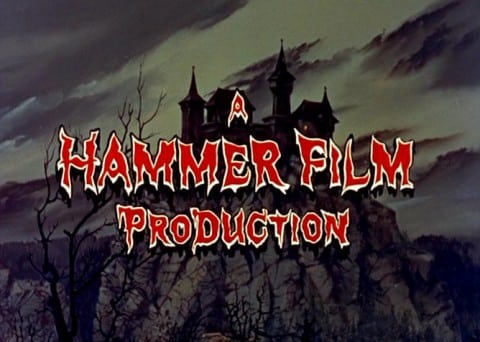
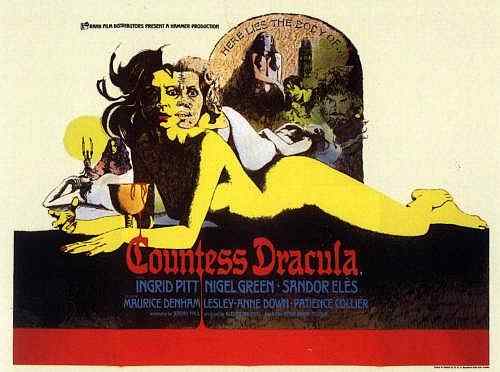
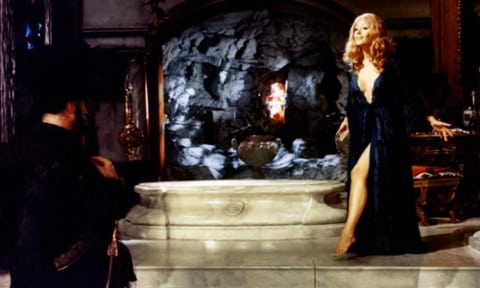
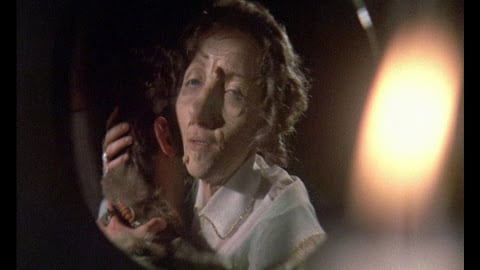




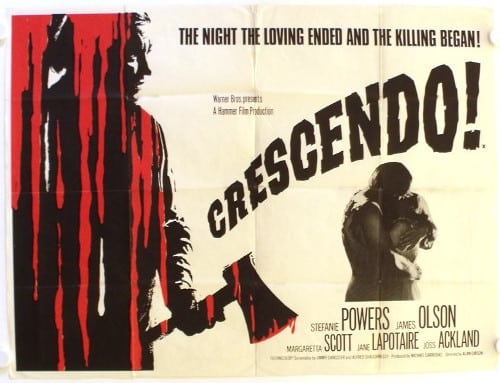
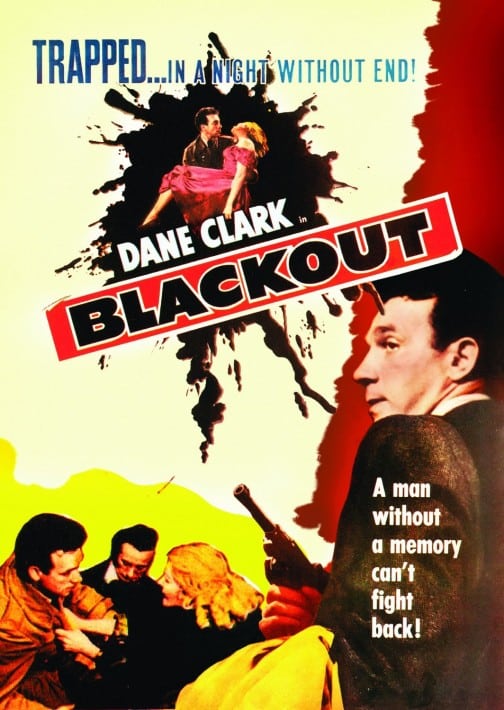
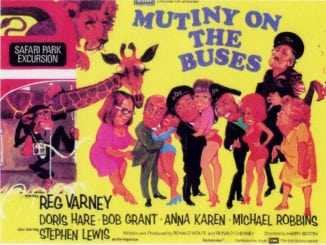
Be the first to comment